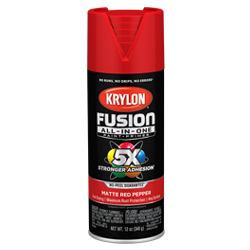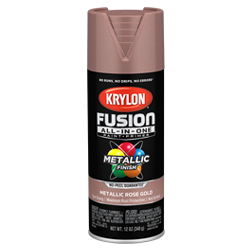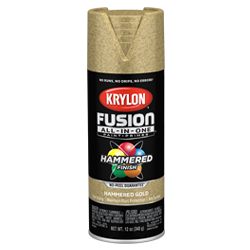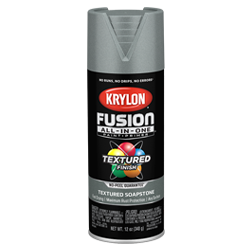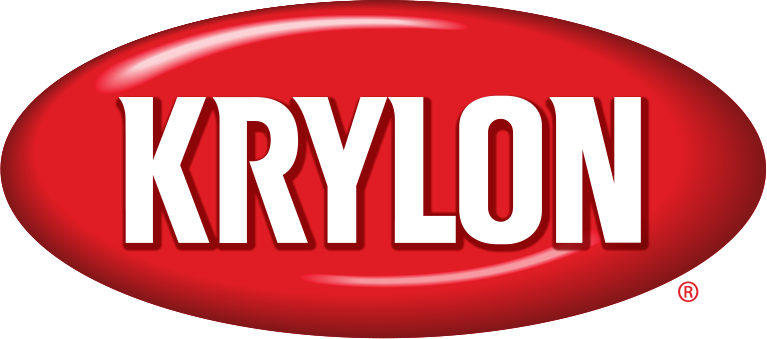
How To Spray Paint Plastic

How To Spray Paint Plastic
The Best Way to Prepare and Paint Your Next DIY Project
Whether giving a much-loved family heirloom a facelift or adding a pop of color to a more modern piece of furniture, spray paint helps make your job simpler. It’s easy to apply and delivers a smooth, longer-lasting finish and requires far less prep work—especially when working on a surface with plastic substrate.
Much like spray paint, plastic furniture, décor and accessories are affordable, durable and versatile, offering the perfect way to spruce up or add bold pops of color to your favorite spaces.
The Proper Paint
Because plastic, PVC and similar surfaces tend to be harder for some other brush-on and spray paint options to stick to, premium spray paint products are a must. Determine the type of finish you’d like your project to have. Krylon® aerosol paints are available in a variety of finishes, ranging from textured to metallic.
How to prepare plastic for spray painting
Before spray painting, set up your workspace. We recommend doing so outdoors, or in another well-ventilated area. Make sure your space is set apart from surfaces you don’t want to get paint on and that you’re working on an absorbent material, like cardboard or a drop cloth. You can even create a single-use spray booth with a cardboard box for added protection. Regardless of where you end up working, it’s always a good idea to wear a painting mask and check the label on the back of your spray can for instructions.
Next, gather your materials. Here’s what you’ll need:
- A damp rag
- All-purpose regionally compliant household cleaner
- Sandpaper (depending on the condition of your item)
- Painter’s tape (if you have a pattern or design in mind)
- Cans of Krylon spray paint in your chosen colors and textures
Steps to Surface Prep
Step 1: Wipe the item down with a damp rag so all dirt and grime are removed. When upcycling a piece of plastic furniture or décor that’s used outdoors, wipe it down with an all-purpose or sanitizing cleaner and allow to dry completely. This is especially important if mold or mildew is present.
Step 2: Remove any included hardware that will be painted separately or left as-is and set aside.
Step 3: Older plastic may require removal of loose paint or other previously applied coatings. If necessary, use sandpaper to gently smooth the surface then rinse thoroughly with water. Wipe with a tack cloth. Make sure the surface is free of debris and allow to dry completely.
Step 4: If adding a pattern or color blocking to the item, use painters’ tape to mask off your design.
Step 5: Spray your surface with Bonding Primer with Fusion Technology to aid in bonding paint to hard-to-stick surfaces like plastic for a premium finish. Note: if you are using Fusion All-In-One, no need to prime! Skip to step 6.
Step 6: Start spraying your plastic surface. Spray paint any hardware separately and dry completely before reattaching to your furniture.
Step 7: To give your finished product an added layer of protection, especially for outdoor furniture or décor exposed to the elements, consider using Fusion All-In-One Clear that is non-yellowing.
Applying Spray Paint
- Start by holding your Krylon spray paint the recommended distance away from the surface of your project to minimize drips and areas of excess paint. These instructions will be outlined on the can.
- Next, apply several light coats, waiting 30-60 seconds between each, until you’re satisfied with the appearance. Always start and finish your spray pattern off the object and release the spray tip at the end of each pass. This ensures even coverage across the entire surface.
- Use a smooth, even sweeping motion and overlap your spray pattern by about one-third with each pass. Repeat these steps until you’ve achieved your desired look, doing the same with areas separated with painters’ tape to complete your design.
- Allow the item to dry completely.*** Krylon Fusion All-In-One is dry to the touch in 20 minutes and can be handled in about one hour.
- Once dry, remove painters’ tape, reattach all hardware and style however it suits your space best.
**Always be sure to follow the instructions outlined on the can.


Plastic Projects
Find inspiration and see more step by step painting instructions for plastic projects.

More Spray Painting Tips
For more information on spray painting best practices, check out our list of frequently asked questions.
*If Krylon Fusion All-In-One, when applied according to product application instructions to a properly prepared surface, peels or fails to perform to your complete satisfaction, contact us with the product number at 1-800-247-3268 or ask@krylon.com to request a refund. **Always be sure to follow the instructions outlined on the can. *** Refer to the Krylon spray paint can label for dry time information and other important instructions.

